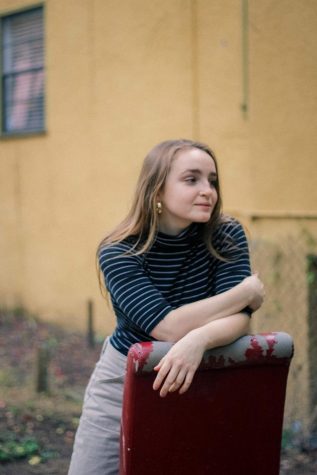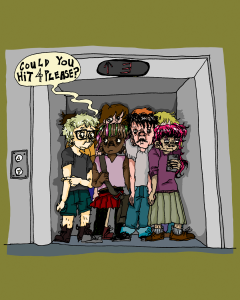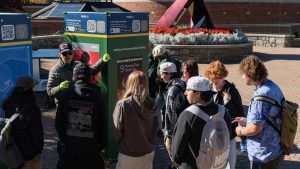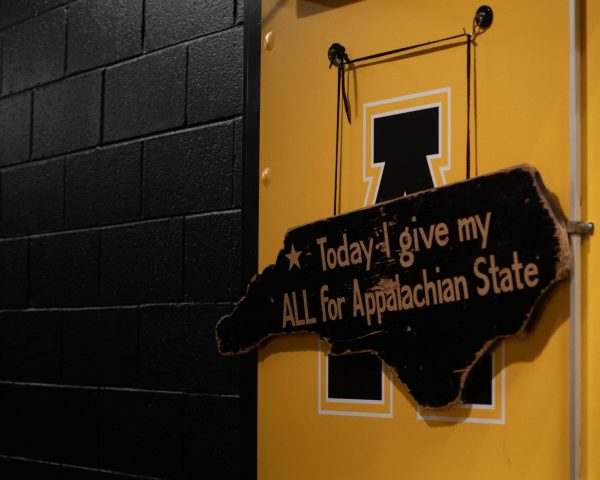On-campus garden tries to maintain its roots despite its uncertain future
November 14, 2019
The future of the App State Roots Garden, located at the edge of east campus on Howard Street, is uncertain. In late October, when rumors that the garden might be paved began circulating on social media and in classrooms, many students, faculty, staff and community members sought clarification of the plan or took to an online petition to voice disapproval.
The petition titled “Save the ASU Roots Garden” appeared on Change.org Oct. 30. In the first five days of its release, 3,000 people signed, many included stories and memories with their signatures.
“There is no plan to move or pave over the Roots garden at this time,” Chief Sustainability Officer Lee Ball wrote in an email. “We simply began the preliminary process of looking at options for that space and for a new garden location.”
In App State’s master plan for 2025, the space occupied by the Roots Garden is depicted as new faculty offices. The master plan committee and design team approved this report one month before ground broke on the Roots Garden in April 2017. At the time, it remained an empty lot.
Ball helped conceptualize the garden during the year before its opening. He said everyone involved with its creation and maintenance understood it was established as a temporary garden location.
“We are so fortunate to have the kind of cross-divisional relationship that allows us to utilize temporary spaces for gardens and green space,” Megan Hayes, associate vice chancellor and chief communications officer, wrote in an email. “This can also be challenging because these spaces are so special to those who work in them.”
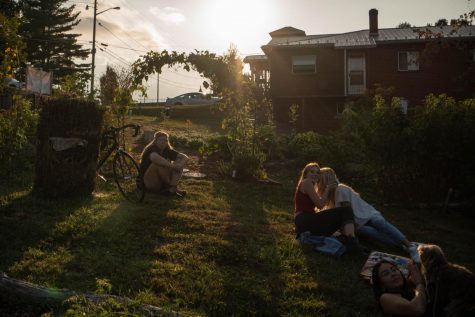
Despite its temporary purpose, the garden has cultivated significant community presence and a variety of native, medicinal and perennial plants. The Roots Garden is frequently the site of volunteer work, seed saving workshops, potlucks, small concerts, permaculture and agroecology classes, yoga sessions, and after school programs.
A group of students who have worked in or live near the garden attended the SGA Town Hall on Nov. 6 to voice their concerns about losing the space with Thanh Schado, director of environmental sustainability for SGA.
“We actually live in the brick house right beside the garden and can hear people talking outside our window in the morning. I can’t even imagine if there were bulldozers and cars on it,” junior finance major Olivia Koontz said at the event.
Schado created a working group with concerned students, keeping them informed of new plans for the garden, as many of them expressed feeling blindsided by the potential repurposing of the land.
“It would take years to create a similar site in a different space; this garden is more than a garden,” said Kylie Holloway, president of the Garden Club. “It’s a community space, it’s a commons, and that’s something that is slipping through our fingers in this town specifically.”
Food from the Roots Garden is often shared with the community. In the summers, Holloway said the garden interns with the Office of Sustainability share “armfuls of squash and tomatoes” with F.A.R.M. Cafe and on-campus food banks. Ripe blackberries, raspberries and herbs, free for picking, greet students as they return in the fall.
The growing space includes a wheelchair-accessible planting bed to accommodate community members with disabilities or injuries. Richard Rheingans, chair of the sustainable development department, said the garden’s accessibility, proximity to King Street and food security work makes it a vital gateway, connecting the town with the university.
As a community space, the Roots Garden has partnered with several outside organizations, such as the Upward Bound summer educational program and the Child Development Center. Additionally, one of the first unofficial partnerships it fostered was with Blue Ridge Women in Agriculture, in which the garden provided free, open pollinated seeds for the nonprofit’s Ashe and Watauga county seed libraries.
“(The Roots Garden) has been the site of many seed saving demonstrations,” said Dave Walker, interim executive director of BRWIA. “In the past, we’ve done some indoor powerpoint presentations, but having the garden enabled us to demonstrate out in the garden . . . and the hands on tactile demonstration really makes a difference.”
Walker said he doesn’t think the possible addition of parking spots on the Roots Garden space would alleviate parking pressures.
Downtown Development Coordinator Lane Moody said use of King Street parking lots and street parking by students is a frequent point of discussion among downtown vendors. She said the King Street, Queen Street and Depot Street public eight-hour parking lots are often full before shops have opened.
“Somehow the community needs to be included and respected, and green spaces and gardens need to be included and respected,” Jean Wilson wrote in the petition.
Many people connected to the space said the garden can’t be moved and maintain its identity.
Walker said the garden’s location makes it a “natural sink” for Howard Street stormwater runoff.
“It’s based on permaculture design,” he said. “It’s more resilient, and it can better alleviate or withstand the impacts of this chaotic weather we are seeing.”
Holloway said memories and attachments people have with the garden are another reason she can’t imagine a new location.
“That personal connection to place is something that people may not see,” Holloway said. “One thing that has been showcased by the petition is just the positive impact that this garden has made on hundreds of peoples lives, even thousands.”
Sydney Blume, an App State alumna and the previous campus garden coordinator, spent much of her time at the university in the Roots Garden planting native trees and slowly weaving a willow dome in the northeast corner of the garden.
Blume wrote on the petition, “This is a sanctuary, an oasis for life to flourish in an increasingly paved world. This is space to reconnect, fingers in the dirt, blackberries on the tongue, sweet herb scents in the breeze, to our roots. Arches of greasy beans, woven willow domes, floral abundance, community food and medicine shared freely — don’t pave this little pocket of paradise to put up a parking lot.”

